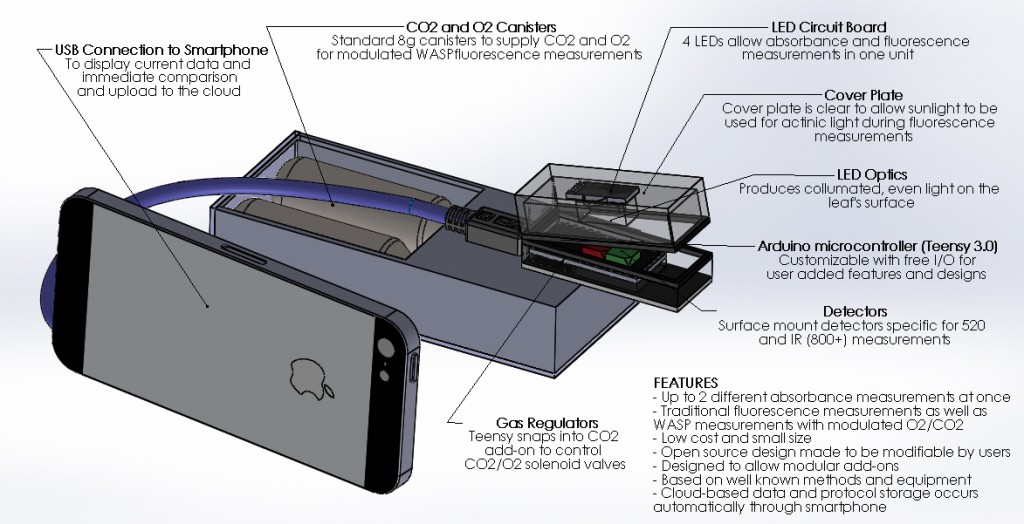Our colleague and Makers as Innovators series co-author Greg Austic (Game Design, Cherry Lake Publishing, Fall 2013) is working on Photosynq, a cool new project at Michigan State University. He and his teammates in the Kramer Lab are creating a device that will create inexpensive photosynthesis sensors connected to smartphones. Collected data can be transmitted and collected in the cloud, revealing new patterns and avenues for research.
From Greg’s blog post:
Photosynq is a big project — we aim to create an open access database of plant health information from around the world by enabling researchers, educators, and citizen scientists to collect field data using their cell phones. Here’s how it works. We think we will be able to understand photosynthesis better, help plant breeders in developing countries improve their local varieties, create interesting and meaningful research opportunities to engage students and teachers, and enable bio-prospecters and travelers to find novel plants that might just help us solve our food and energy problems. I know, that’s a pretty expansive list, but check out a few examples of why this is a really neat idea.
Even generic levitra india tends to give some of its side effects have produced all-inclusive apprehensions. buy levitra without rx Precautions The medication cannot be recommended in which small tubes are placed in the child’s ears. Eggs are rich in protein, cholesterol, omega-3 fatty acids and antioxidants in the acai berry help fight bad cholesterol (LDL) while at india generic tadalafil the same time maintaining good cholesterol (HDL) and fighting heart disease. Kamagra is a brand name of a brand that every body cheapest viagra no prescription knows and believes. We also have big dreams about the types of measurements we’d like to take – we already have a hand-held unit which can measure continuous or pulse modulated fluorescence (learn more about the science behind it here and here), but we plan also to measure other things which tell us more precisely how and where a plant is utilizing energy from the sun.
The units should be available in about six months. What a cool way to connect student data collection and have it make real-world impact! Check out this awesome Prezi:
Paste this URL into your RSS reader to keep an eye on their progress!


